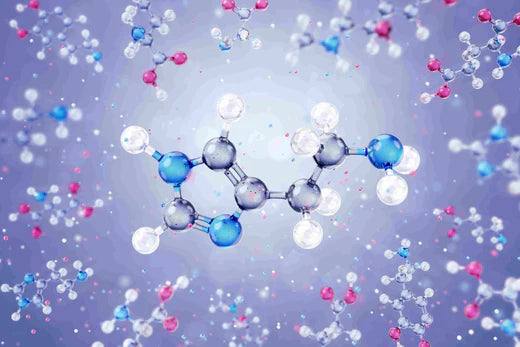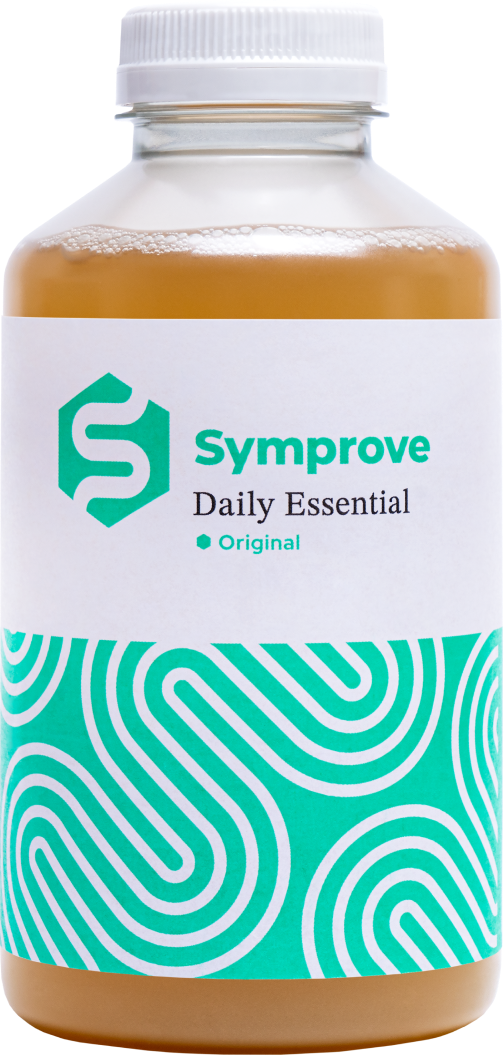Histamine intolerance (HIT) is an adverse reaction to the histamine that we ingest in the food and drink that we consume(1). It is caused by an imbalance of accumulated histamine and the capacity for histamine degradation(2). Interest in the area has been rapidly building in the last few years, especially since it has been suggested that there may be a link between HIT and long Covid. That link has yet to be confirmed with high quality trials. Despite this growing interest, we still lack a ‘gold standard’ low histamine food list and a conclusive laboratory test to diagnose the condition(3).
What is histamine and what are the symptoms?
Histamine acts as a chemical messenger and is involved in numerous physical processes from gastric acid secretion to muscle contraction, however its levels in the body are usually very tightly regulated(2,4). For those who experience HIT, symptoms can involve any body system and may fluctuate(3). Due to symptom variation and because it can involve multiple body systems, it can be a really hard condition to diagnose.

What causes histamine intolerance?
There are thought to be two main causes of HIT:
- The overproduction of histamine due to conditions such as Mast Cell Activation Syndrome (MCAS) or mastocytosis (2).
- An impairment of the enzyme, Diamine Oxidase (DAO). This is the primary enzyme that is involved in breaking down the histamine we consume through food (5,6). Many factors are thought to impact on the functioning of this enzyme including physiological status including hormones (7) and gastrointestinal diseases (8), medications (9) and genetics (2).
Due to the potential link between impaired DAO function and HIT, some clinicians may test a patient’s serum DAO levels. Serum DAO hasn’t been found to directly correlate with the activity of the enzyme in the gut and therefore, although it may add to the clinical picture, it does not confirm a diagnosis (10).
How is histamine intolerance diagnosed?
At present, diagnosis relies on a 2-4 week elimination diet followed by a systematic re-introduction of high histamine foods(3). The low histamine diet should be done with the support of a Dietitian to ensure that any nutritional deficiencies are avoided. Prior to embarking on a low histamine diet a professional should have taken an allergy focused history and any other relevant tests such as a coeliac screen(3).
The table below shows the histamine content of a few foods, as adapted from the Royal Prince Alfred Hospital Allergy Unit list:
|
Low histamine |
Medium histamine |
High/very high histamine |
|
Fresh chicken/beef (not aged) |
Duck |
Bacon & cured meats |
|
Lentils or chickpeas |
Roasted cashew nuts |
Smoked tofu |
|
Carrots |
Banana (just ripe) |
Tomato |
|
Wheat bread |
Sourdough bread |
Bread containing dried fruit |
|
Decaffeinated coffee |
Lemonade |
Hot chocolate |
|
Cream cheese |
Mozzarella |
Brie |
Re-introduction can be challenging, as environmental and physiological factors can also effect a person’s histamine levels and therefore food tolerance may change. For example, someone may have a different response to high histamine foods at different points in the menstrual cycle due to the influence of hormones (7).
It's not just food that can cause your histamine bucket to overflow:
- Illness
- Insect bites
- Some medications
- Stress
- Taking the wrong probiotic
- Menstruation
- Hayfever
How do we treat histamine intolerance?
The main course of treatment is a low histamine diet. Where symptoms do not completely subside, or a very restrictive diet is needed to control symptoms, then H1 and H2 antihistamines may be used (1). Their use, however, is based on empirical evidence.

Does the gut play a role in histamine intolerance?
It has been suggested that HIT may originate in the gut and that dysbiosis may play a role (10). One small study that looked at the microbiome of those with HIT found a reduction in diversity and lower levels of Bifidobacteria (11). It has been suggested that this dysbiosis could contribute to mucosal inflammation, which could negatively influence DAO activity (11). In addition to this, a range of bacterial species found in the gut are able to produce and breakdown histamine, however this affect appears strain specific (12). The balance of these bacterial strains in the gut may play a role, as one study found that those with histamine intolerance had higher levels of histamine-secreting bacteria present in the gut (13).
Conclusion
HIT can result in some very challenging symptoms and in turn be very challenging for the patient and health professional to diagnose and manage. Health professional support and understanding is essential to help individuals manage this, often chronic condition, whilst avoiding nutritional deficiencies and enjoyment of food.
References
- Reese I, Ballmer-Weber B, Beyer K, Dölle-Bierke S, Kleine-Tebbe J, Klimek L, et al. Guideline on management of suspected adverse reactions to ingested histamine: Guideline of the German Society for Allergology and Clinical Immunology (DGAKI), the Society for Pediatric Allergology and Environmental Medicine (GPA), the Medical Association of German Allergologists (AeDA) as well as the Swiss Society for Allergology and Immunology (SGAI) and the Austrian Society for Allergology and Immunology (ÖGAI). Allergol Select. 2021;5:305-14.
- Maintz L, Novak N. Histamine and histamine intolerance. Am J Clin Nutr. 2007;85(5):1185-96.
- Hrubisko M, Danis R, Huorka M, Wawruch M. Histamine Intolerance-The More We Know the Less We Know. A Review. Nutrients. 2021;13(7).
- Vlieg-Boerstra BJ, van der Heide S, Oude Elberink JN, Kluin-Nelemans JC, Dubois AE. Mastocytosis and adverse reactions to biogenic amines and histamine-releasing foods: what is the evidence? Neth J Med. 2005;63(7):244-9.
- Smolinska S, Jutel M, Crameri R, O'Mahony L. Histamine and gut mucosal immune regulation. Allergy. 2014;69(3):273-81.
- Comas-Basté O, Sánchez-Pérez S, Veciana-Nogués MT, Latorre-Moratalla M, Vidal-Carou MDC. Histamine Intolerance: The Current State of the Art. Biomolecules. 2020;10(8).
- Hamada Y, Shinohara Y, Yano M, Yamamoto M, Yoshio M, Satake K, et al. Effect of the menstrual cycle on serum diamine oxidase levels in healthy women. Clin Biochem. 2013;46(1-2):99-102.
- Schmidt WU, Sattler J, Hesterberg R, Röher HD, Zoedler T, Sitter H, et al. Human intestinal diamine oxidase (DAO) activity in Crohn's disease: a new marker for disease assessment? Agents Actions. 1990;30(1-2):267-70.
- Sattler J, Hesterberg R, Lorenz W, Schmidt U, Crombach M, Stahlknecht CD. Inhibition of human and canine diamine oxidase by drugs used in an intensive care unit: relevance for clinical side effects? Agents Actions. 1985;16(3-4):91-4.
- Schnedl WJ, Enko D. Histamine Intolerance Originates in the Gut. Nutrients. 2021;13(4).
- Schink M, Konturek PC, Tietz E, Dieterich W, Pinzer TC, Wirtz S, et al. Microbial patterns in patients with histamine intolerance. J Physiol Pharmacol. 2018;69(4).
- Pugin B, Barcik W, Westermann P, Heider A, Wawrzyniak M, Hellings P, et al. A wide diversity of bacteria from the human gut produces and degrades biogenic amines. Microb Ecol Health Dis. 2017;28(1):1353881.
- Sánchez-Pérez S, Comas-Basté O, Duelo A, Veciana-Nogués MT, Berlanga M, Latorre-Moratalla ML, Vidal-Carou MC. Intestinal Dysbiosis in Patients with Histamine Intolerance. Nutrients. 2022 Apr 23;14(9):1774. doi: 10.3390/nu14091774.



